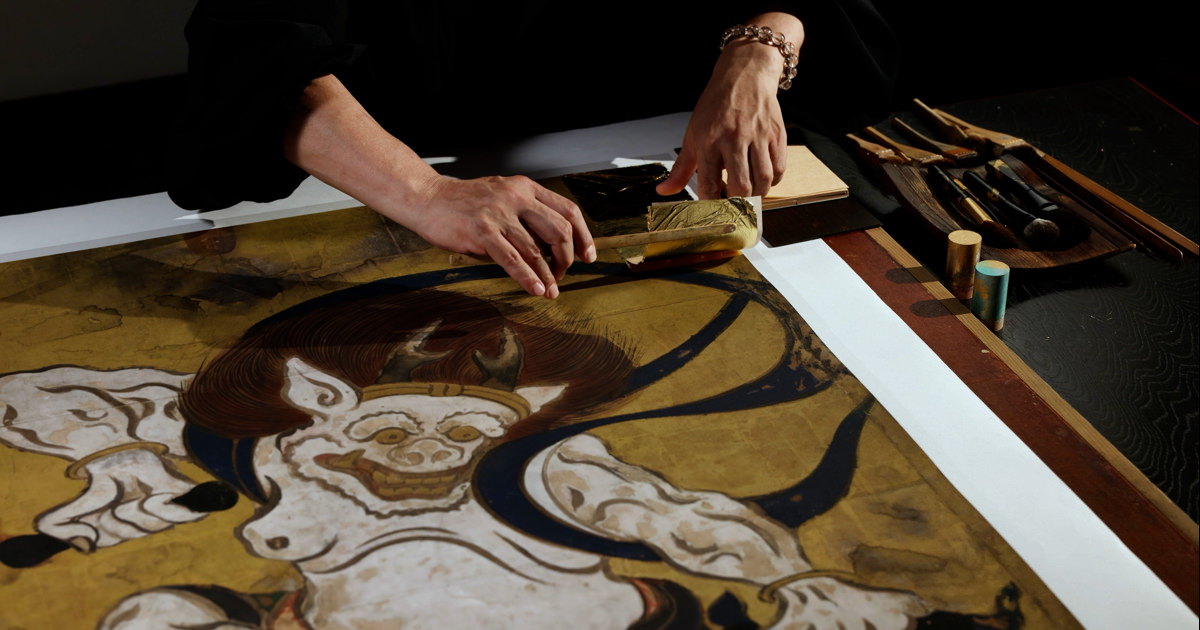Landscape of the four seasons, approx. 1500–1573, by Shikibu Terutada (Japanese, active mid 1500s). Ink, light colors, and gold on paper. Asian Art Museum of San Francisco, The Avery Brundage Collection, B60D48+ and B60D49+. Photograph © Asian Art Museum of San Francisco.
These images are based on the high resolution facsimile produced by the Tsuzuri Project. Unauthorized copying, duplication, or transfer of these images is strictly prohibited.
Landscape of the Four Seasons
High-resolution facsimiles
- Material
- printed, sprinkled gold on washi paper
- Period of creation
- Tsuzuri Project Stage 10 2016–2017
- Recipient
- Kyoto National Museum
Original
- Artist
- Shikibu Terutada
- Historical era
- Muromachi (16th century)
- Material
- ink, gold paint on washi paper
- Medium
- a pair of six-fold screens
- Size
- Each screen H153.7 × W325.1 cm
- Collection
- San Francisco Asian Art Museum of San Francisco
Description
The life of Shikibu Terutada had been covered in mystery, but the recent researches show that he was active in the Kamakura area in Kanto, or eastern Japan in the mid-16th century. He is thought to have established his own painting style through the study of the style of the painting circles in Kamakura including Chuan Shinko and Shōkei in the-mid Muromachi period, and later the one of Kanto branch of the Kano school.
These screens are considered to be the most monumental works executed by Shikibu Terutada. In this painting, the subtle transition of the four seasons can been seen in a panoramic landscape from right to left, which are represented by plum tree, waterfalls, red leaves and snowy mountains. The world has distinctive atmosphere created by the meticulous rendering of rocks and trees together with gold richly applied onto the surface.




